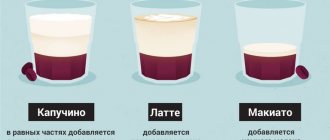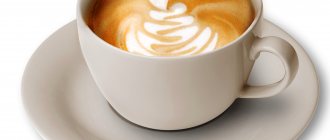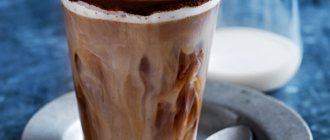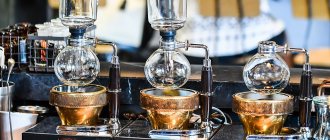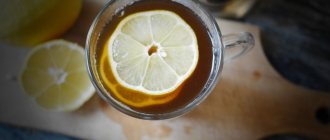Early morning in St. Peter's Square in Rome, melodious Italian speech, a bagel with marzipan and almonds and, of course, a cup of hot aromatic cappuccino with sweet foam - a symbol of the beginning of the day, Italian carefreeness and good mood. And even though Italy is far away, this drink is good both on a Moscow spring day and on a quiet evening in the village in the company of homemade sweet pies.
We will tell you everything we know about the world's favorite coffee drink with milk, and teach you how to prepare it at home without a cappuccino maker.
Cappuccino coffee - what is it?
The tradition of adding milk to strong coffee to soften the harshness of the taste appeared around the 17th century. We do not have reliable information about who and when became the author of this innovation. But already from the end of the 18th century, coffee with milk was served in all existing coffee houses in Europe.
Cappuccino is a term of Italian origin. Translated, it means “Capuchin”, so the name is associated with the order of Capuchin monks. It was experimentally found that if a well-mixed mixture of milk and cream was added to coffee, a stable foam in the shape of a small pyramid formed on the surface. Because of its resemblance to the white pointed hoods of the Capuchin monks, the coffee was nicknamed “cappuccino.”
The appearance of devices for frothing milk into foam subsequently raised the recipe to the heights of popularity. By the middle of the 20th century, cappuccino became one of the favorite coffee drinks, and it remains so to this day.
Popularity
Cappuccino has traditionally been prized in Europe, Australia, South America and some North American countries. By the mid-1990s, cappuccino became more accessible to North Americans as upscale coffee shops emerged.
In Italy and throughout continental Europe, cappuccino is traditionally drunk in the morning, usually as part of breakfast, often with some other drink. bakery. Italians don't usually drink cappuccino with meals other than breakfast, although they do occasionally. espresso after lunch or dinner.[18][19] In Italy, cappuccino is only drunk before 11:00, as cappuccino is milk-based and is considered too heavy to drink during the day.[20] Instead, espresso is usually ordered after a meal due to the fact that the lack of milk aids digestion.[18] In North America, cappuccino became popular along with the boom of the American coffee industry in the late 1990s and early 2000s, especially in cities. Pacific Northwest.[21]
Cappuccino is traditionally served in 150–180 ml (5–6 US fl oz; 5–6 US fl oz) cups. By the early 21st century, a modified "shortened" version was served at fast food chains in portions up to 600 ml (21 imp fl oz; 20 US fl oz).
Composition of cappuccino coffee
The list of main ingredients for cappuccino consists of only two items:
Freshly brewed coffee
You can take a shot of espresso, brew coffee in a cezve, geyser coffee maker, or simply brew it in a French press. A prerequisite: hand-brewed coffee must be strained so that particles of grounds do not interfere with the enjoyment of your cappuccino.
Milk
The milk should be frothed or frothed until half of its volume is reduced to a smooth, stable foam. You can take milk of any fat content. If you are making cappuccino at home and want to achieve a good, stable and smooth foam without using a cappuccino machine, then choose a mixture of cream and milk in a 1:1 ratio.
Additional cappuccino ingredients:
- Sugar - cane or caramelized sugar complements the taste of the drink well.
- Decorative topping - the most popular topping for cappuccino is cocoa or cinnamon. Both ingredients can be mixed with powdered sugar.
Cappuccino coffee recipe
A classic cappuccino is made with espresso.
Cappuccino proportions:
- 1/3 coffee.
- 1/3 milk.
- 1/3 milk foam.
What is needed to prepare the drink?
- Espresso - 40-50 ml.
- Milk – 80-100 ml.
- Sugar - to taste.
- Flavorings and toppings are optional.
How to make cappuccino?
- Brew a 40-50 ml portion of espresso.
- Pour cooled milk at a temperature of 4-5 degrees into the cappuccino maker and beat until it forms a dense and smooth foam with a finely porous structure. This increases the temperature of the milk, so it is important not to overheat the milk when frothing. It should have a final temperature of 65-75 degrees.
- Pour the prepared coffee into a heated cup, then the milk, and place the remaining foam on the surface of the drink.
- Decorate with sprinkles.
Flavored cappuccino is prepared using the same technology, but topping is added - caramel, chocolate, vanilla or cream. The topping is poured into the coffee before adding the milk.
Cappuccino can be decorated with latte art designs.
Recommendations
- “What is cappuccino?” Spruce eats
. Retrieved 2019-11-06. - ^ a b
“Cappuccino or latte - what’s the difference?”
www.latteartguide.com
. - "Cappuccino - Merriam-Webster's definition of cappuccino." merriam-webster.com
. - “Cappuccino or latte – what’s the difference?” A Guide to Latte Art
. 2016-01-26. Retrieved 2019-11-06. - "Cappuccino". etymonline.com
. - “Where did the name “Cappuccino” come from?” www.merriam-webster.com
. Retrieved 2019-11-06. - "Certified Italian cappuccino." espressoitaliano.org
. - "Cappuccino". cibo360.it
. - "World Barista Championship 2013 Rules and Regulations - Version 2012.10.13" (PDF). worldbaristacha championship.com
. paragraph 5. Archived from the original (PDF) on 2016-03-04. Retrieved December 2, 2015. - "Daddy blesses Father with a cappuccino." BBC News
. April 27, 2003. Retrieved 2017-04-01. - "Where did the name 'Cappuccino' come from?" Merriam-Webster
. Retrieved 2018-09-24. - ^ a b c
Ellis, Markman (2004).
The Coffee House: A Cultural History
. London: Orion Publishing Group (Weidenfeld and Nicholson). paragraph 122. ISBN 9780297843191. Retrieved June 17, 2016. - Obersill, Gerhard H. (1983). Ins Kaffeehaus!: Geschichte einer Wiener Institution
. Jugend & Volk Verlagen. pp. 77–85. - "Espresso Chronology". timelineindex.com
. - “Almost everyone loves a good cappuccino, but where did it come from?” Spruce
. Retrieved 2017-05-08. - Morris, Jonathan (2007). “Conquests of cappuccino. Transnational history of Italian coffee". academica.edu
. - Gail McGowan. "Cappuccino in San Francisco." San Francisco Travel Guides
. Archived from the original on 2018-10-27. - ^ a b
"Italian coffee culture".
ITALY Magazine
. - "The History of Cappuccino - Cappuccino Frati Lucca." Frati Lucca's cappuccino
. Retrieved 2017-05-08. - “Never order a latte in the afternoon: rules for drinking coffee in Italy.” Huffington Post
. August 8, 2022. - "Pacific Northwest - What is Latte Art?" A Guide to Latte Art
. 2013-04-28. Retrieved 2017-05-08. - "BARISTAS OF AMERICA: Please stop ruining my cappuccino." Business Insider
. Retrieved 2017-05-08. - Tsolakidou, Stella. "Summer Coffee in Greece: Frappe Variations vs. Freddo." GreekReporter.com
. Retrieved 2017-05-08. - “Starbucks has launched two new iced coffee varieties in the UK.” Cosmopolitan
. 2017-05-04. Retrieved 2017-05-06. - "Cafe dairy profits from a young latte." Sydney Morning Herald
. November 6, 2005
Cappuccino coffee at home: recipe
How to make cappuccino at home if you don’t have a coffee machine with a cappuccino maker? You'll have to resort to a proven old recipe.
- Prepare strong coffee in a cezve or French press at the rate of 2 teaspoons per 100 ml of water.
- Mix 50 ml of milk and 50 ml of cream with a fat content of 10-15%.
- Heat the milk and cream mixture in the microwave for 30-60 seconds. The mixture should be hot, but not boiling.
- Using a mixer, immersion blender or whisk, beat the milk-cream mixture for 3-4 minutes until you get a thick, smooth, shiny foam with small bubbles.
- Strain the brewed coffee.
- Pour 50 ml of coffee into a heated cup, then pour in the milk and top with foam.
- Mix cocoa with powdered sugar. Garnish the cappuccino with the resulting topping.
Sugar for cappuccino is served separately.
If you decide to flavor your drink by adding topping, add the flavored syrup before adding the milk.
Ingredients
Italian experts believe that the ideal amount of espresso is 25 ml: if the espresso is too “short” (not enough), then the aromas will not fully develop, and if it is too “long” (too much), then they will dissipate. It is ideal to use fresh whole cow's milk, which has the right organoleptic qualities and can produce a velvety foam.
Discussions about the properties of milk in relation to the foam obtained from it, with a mention of the Institute of Chemistry and Milk Technology in Kiel (Germany), were given in one of his posts with discussions about latte.
Instant coffee cappuccino
Is it possible to make cappuccino from instant coffee? Technically, it’s possible, but the taste and aroma of such a drink will be far from real cappuccino. Instant ersatz cannot replace natural coffee.
If you decide to do such an experiment, then first boil water and prepare instant coffee at the rate of 1 teaspoon per 50 ml of water. You can immediately add topping to your coffee to improve the taste.
Then froth the milk using a cappuccino maker. If you don’t have this device at hand, then heat the mixture of cream and milk and beat with a blender or mixer until foam forms.
Pour the coffee into a heated cup, then add frothed milk and add foam on top. A sprinkle of cocoa or cinnamon will decorate your cappuccino.
Calorie content of cappuccino coffee
The calorie content of cappuccino varies depending on the fat content of the milk, the presence or absence of sugar, and topping.
Cappuccino calorie table
| Composition of the drink | Calorie content of 100 ml cappuccino | Calorie content of a serving of cappuccino (150 ml) |
| Cappuccino with milk 2.5% fat | 36 kcal | 54 kcal |
| Cappuccino with milk 3.2% fat | 41 kcal | 61 kcal |
| Cappuccino with a mixture of milk and cream 10% fat | 60 kcal | 90 kcal |
| Cappuccino with 1 tsp. Sahara | 50 kcal | 74 kcal |
| Cappuccino with sugar and cocoa sprinkles | 54 kcal | 80 kcal |
| Cappuccino with flavoring (topping) without sugar | 54 kcal | 80 kcal |
| Cappuccino with flavoring (topping) and sugar | 67 kcal | 100 kcal |
How much caffeine is in cappuccino
Caffeine is an essential component of all drinks based on natural coffee. Cappuccino is no exception to the rule. Its caffeine content varies from 40 to 70 mg . Cappuccino made from ground Arabica beans will be slightly less strong due to less caffeine saturation of the beans. If a mixture of Arabica and Robusta was used to prepare the drink, then such coffee contains more stimulating alkaloid, since Robusta has a higher percentage of caffeine than Arabica.
A classic that will always be in fashion
According to baristas, cappuccino will never go out of style due to its versatility. This drink is a compromise between the bright, brutal expressiveness of espresso and sweet coffee drinks such as latte or raffa, which is fashionable in Russia.
The taste of cappuccino is influenced by two components - coffee and milk, and the milk must be of really high quality and suitable fat content. Good milk can “pull out” grain of average quality (but this relationship does not work the other way around).
Cappuccino with cow's milk
Cappuccino with cow's milk is a classic that can be found in any cafe from Moscow to Kamchatka. A traditional cappuccino, balanced in taste, cannot be sour or bitter, but it should have a sweetish taste without added sugar due to the natural sweetness of milk.
The ideal foam should be elastic, silky, consisting of microbubbles without large air bubbles, not scalding hot, but not cold either. The sweet taste is provided by lactose, which, when heated, breaks down into monosaccharides - glucose and galactose, and the proteins contained in milk are responsible for the pleasant texture.
For proper cappuccino, a high percentage of protein content is required. But high fat content is not necessary (and even harms the taste).
Cappuccino with plant milk
New times dictate new rules, and for those who for some reason do not accept cow's milk in their coffee, baristas have begun making cappuccino with plant-based milk. For example, coconut, soy, almond or even oatmeal. Each of these products has its own nuances of use: soy and coconut products should not be poured into a freshly prepared drink, as their protein coagulates due to high temperatures (above 60 °C), and almond products begin to taste bitter due to excessive heating.
Read more about plant milk in coffee in our article.
Is it possible for pregnant women and children to have cappuccino?
The milk in cappuccino leads many people to believe that the drink has no restrictions on its consumption. The milk component does not replace the presence of a significant dose of caffeine in cappuccino . Milk only softens the effect of caffeine, reducing the severity of its effects.
The caffeine contained in cappuccino can have a stimulating effect on the nervous system, which is especially vulnerable in pregnant women and children. It is better for them to refrain from drinking cappuccino, as well as all other types of coffee-containing drinks, so as not to put their health at risk.
Pregnant women and children should choose cocoa or hot chocolate instead of cappuccino.
Cappuccino coffee cups
Cappuccino is a voluminous drink, so 180-200 ml cups are suitable for serving it. You can take larger containers, but the peculiarity of serving cappuccino is that the milk foam should not only be flush with the edge of the cup, but even slightly protrude beyond its edge. Therefore, dishes should be selected based on the portion that is prepared in your kitchen.
- Preference is given to cups in the shape of an inverted dome, with an extension at the top. In such dishes, the patterns on the surface of the cappuccino are clearly visible.
- Sometimes cappuccino is served in glass glasses for Irish coffee. The height of the foam is clearly visible in them.
- The best glassware for cappuccino remains ceramic cups with thick walls. In them, the drink retains its temperature longer, while in glass glasses the coffee cools down faster.
Traditional glassware for cappuccino is a white ceramic cup with a volume of 200 ml with thick walls.
Preparation
Preparing cappuccino should begin by frothing cold milk, which will immediately heat up during the process. Once the foaming is complete and the milk is still in the pitcher (not to be confused with the baseball player), the espresso is made. When everything is ready, the milk emulsion is poured into a cup of espresso.
In cafeterias, you can often see how the barista takes milk out of the refrigerator already in the pitcher. Apparently, milk stored in this way does not gain extra degrees when poured into a milk jug at room temperature.
Cappuccino: difference from other coffee recipes
A cappuccino recipe is one of the options for coffee-containing drinks, of which there are a great variety. What is the difference between the most popular traditional coffee menu recipes?
What is the difference between a cappuccino and a latte?
- Proportions. A latte contains much more milk than a cappuccino. A latte contains only 1/5 coffee and 4/5 milk.
- Cooking method. A latte is made by adding coffee to milk. To make cappuccino, on the contrary, milk is poured into coffee.
- Volume. A latte serving is approximately 350-380 ml, sometimes more. Cappuccino is served in portions from 180 to 250 ml.
- The latte tastes milky and sweet. The influence of coffee on the bouquet of the drink is minimal. The taste of cappuccino is coffee and milk, the coffee in it is felt brightly.
What is the difference between a cappuccino and a mochaccino?
- Compound. Mochaccino, in addition to coffee and milk, includes chocolate syrup or hot chocolate.
- Proportions. Mochaccino contains approximately ¼ part coffee and ¾ other ingredients. Compared to cappuccino, the share of coffee is reduced.
- Cooking method. In mochaccino, coffee is added after milk and chocolate, unlike cappuccino.
- Taste. The bouquet of mochaccino is chocolate-milk, sweet, with coffee notes, it differs from the coffee-milk taste of cappuccino.
What is the difference between a cappuccino and an Americano?
- Compound. Americano does not have foamed milk or a high head of foam; only espresso, heavily diluted with water, is used to make it.
- Taste. Americano has a weakened coffee taste, without the dairy component. Even if Americano is diluted with milk, it will be very different from the bright coffee and milk flavor of cappuccino.
What is the difference between cappuccino and espresso?
- Compound. Espresso is coffee brewed in an automatic coffee machine. Prepared without additives, it is the basis for many other coffee drinks, including cappuccino.
- Volume. A serving of espresso ranges from 40 to 80 ml. A cappuccino has a volume of at least 150 ml and can go up to 250 ml.
What is the difference between a cappuccino and a macchiato?
- Proportions. Macchiato, like cappuccino, contains foamed milk, but in much smaller quantities. The classic macchiato recipe is 1/3 milk and 2/3 coffee, while a cappuccino is 1/3 coffee and 2/3 milk.
- Taste. Milk in a macchiato only emphasizes the bouquet of coffee, while milk in a cappuccino significantly softens the harshness of the coffee, blurring the richness of the coffee.
- Cooking method. To obtain a macchiato, coffee is poured into a small portion of frothed milk to create the characteristic coffee stains on the surface of the foam, which give the drink its name. "Macchiato" means "spotted" in Italian.
What is the difference between cappuccino and coffee with milk?
- Cooking method. For cappuccino, milk is frothed using a blender or cappuccino maker.
- Compound. In cappuccino, approximately 1/3 is delicate milk foam, which gives the drink a special taste and recognizable appearance. Coffee with milk does not contain whipped foam.
- Proportions. The milk component for coffee with milk can be anything - half a cup or one tablespoon. The proportions of a classic cappuccino are regulated: 1/3 milk, 1/3 coffee, 1/3 milk foam.
What is the difference between cappuccino and raf coffee?
- Compound. Rough coffee is made from cream, coffee and sugar. The composition of cappuccino is milk and coffee, cream is used much less frequently, and sugar is added as desired.
- Cooking method. To prepare raf coffee, all ingredients are mixed and whipped. For cappuccino, only milk is frothed.
Similar drinks
Other milk and espresso drinks similar to cappuccino include:
- Caffè macchiato (sometimes called espresso macchiato) is a significantly shorter drink that consists of espresso with a small amount of milk.
- Cortado is a Spanish hybrid; a slightly shorter drink that consists of espresso mixed with milk in a ratio of 1:1 to 1:2, without foam. Cafè Cortado is traditionally served in a small glass on a saucer, and its character is more related to the Spanish preference for coffee beans and roasted coffee. Condensed milk is a replacement for fresh dairy milk. Modern coffee shops have switched to fresh milk.
- A flat white hybrid popular in Australia and New Zealand. A cross between a cappuccino and a café latte (flat meaning little or no foam), it is usually made with a double shot of espresso and a little latte art on top. A flat white is made from a milder espresso and without Robusta.
- A latte (short for caffè latte) is a larger drink with the same amount of espresso but more milk and varying amounts of foam, served in a large cup or tall glass.
- A babycino (or children's cappuccino) is basically frothed milk and warm milk in a cup of espresso prepared for small children, a cappuccino for babies without coffee (hence no caffeine). The split should be about 80% foam and 20% warm milk with a sprinkle of cocoa powder and sometimes marshmallows on top. The foam should be an oxygenated foam cushion and the temperature of the milk should be around 40.5°C/105°F. This best preserves the natural sweetness of the milk. The drink originated in Sydney, Australia, in the late 1980s at the famous Zigolini's coffee shop as a reaction to parents giving children the froth of a very popular caffeinated cappuccino, thereby stimulating the children. In North America it is often seasoned. syrup is added, while in Commonwealth countries outside North America it is primarily marketed to children.[26]
How to drink cappuccino correctly?
The ideal way to drink cappuccino is to drink it without stirring, passing the coffee and milk through a layer of airy foam. In order to avoid mixing, sweet toppings were added to cappuccino for those with a sweet tooth.
Some skim off the foam with a spoon and only then start drinking coffee. This is not entirely correct, since with this use there is no opportunity to enjoy a real bouquet of cappuccino.
According to gourmets, sugar spoils the taste of cappuccino, so coffee lovers do not put any sweeteners in their cappuccino. Silky foam and milk sufficiently soften the coffee bitterness.
Italians believe that cappuccino time is morning until noon, or better yet, before 11 o’clock. They do not advise drinking it after meals, as milk slows down and impairs digestion.
Cappuccino: our conclusion
- A coffee drink with the addition of frothed milk and a high, cone-shaped head of foam.
- It has an average calorie content and strength, the invigorating effect is reduced due to the partial neutralization of caffeine by milk.
- The main taste is coffee-milk, pronounced.
- It's better to drink without sugar.
- The optimal time for consumption is before 11 am.
- It has a number of differences from other recipes for coffee-containing drinks.
- The most popular drink in European and American coffee shops.

